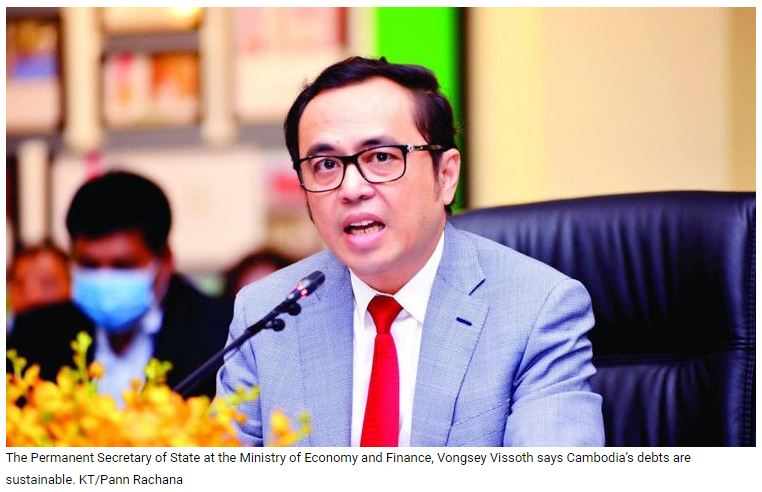Cambodia’s public debt remains sustainable, categorised as low risk
The Cambodian government has signed concessional loan agreements worth $479 million with development partners (DPs) in the first half 2020, according to the Cambodia Public Debt Statistical Bulletin released early this month.
It said that the total loan agreement of $479.05 million (equivalent to SDR 346.45 million) accounts for 25 percent of the debt ceiling of SDR 1,400 million, in which 93 percent or $443.65 million has been signed with bilateral DPs and 7 percent or $35.40 million has been signed with multilateral DPs.
The purpose of the borrowing is to finance public investment projects in priority sectors that support long-term sustainable economic growth and increase economic productivity and production.
The infrastructure sector accounts for 93 percent, while 7 percent has been allocated to other priority sectors. Overall, the loans are highly concessional with an average grant element of 56 percent, according to the bulletin.
“Accumulatively, from 1993 to 30 June 2020, the Cambodian government has signed concessional loan agreements with DPs amounting to $13.08 billion, of which 87 percent and 13 percent are for infrastructure and other priority sectors respectively,” the bulletin read.
On top of this in the first half of 2020, the government has also disbursed $443.97 million from the DPs in which 63 percent or $281.26 million is from the bilateral DPs and 37 percent or $162.71 million is from the multilateral DPs.
In addition, the government has also made debt service payments to DPs amounting to $152.37 million in the first half of 2020.
The permanent secretary of state at the Ministry of Economy and Finance, Vongsey Vissoth said earlier in July that Cambodia will borrow more money from foreign countiesy and also from the market.
“I thank the World Bank, ADB, Korea, Japan and France who had provided loans for supporting development projects, but also for supporting Cambodia’s national budget,” Vissoth said.
“With these loans, it had relieved the burden of using the government’s savings. The government’s saving is estimated at $3 billion, but it has announced the spending of about $1 billion of the savings during the COVID-19 pandemic,” Vissoth added.
He said that next year, the government will spend more money in the recovery stage of COVID-19 and in restoring the economy.
“We will spend big amounts of money on the critical sectors and not to all sectors. We will also narrow down unnecessary needs, and expand expense to the most needed sector through the government revenue collected in 2021, and use more government savings and loan from outsiders,” Vissoth said.
“There is more room to borrow from foreign countries. Our public debt is less than 30 percent of GDP. Thus, our debt sustainability has not collapsed and our debt sustainability is good,” he added. Next year, we will seek loans from foreign countries for budget support.
As of June 20, 2020, Cambodia had a total public debt outstanding amount of $7.9 billion, classified as public external debt. Public Domestic Debt however, had been fully repaid on February 2020.
The preliminary result of Debt Sustainability Analysis (DSA) showed that in 2020 all the 5 key debt indicators are well below the respective indicative thresholds in which 1) prevent value (PV) of total public debt to GDP is 23 percent (threshold is 55 percent), 2) PV of public and publicly guaranteed external debt to GDP is 23 percent (threshold is 40 percent), 3) PV of public and publicly guaranteed external debt to exports is 34.1 percent (threshold is 180 percent), 4) public and publicly guaranteed external debt service to exports is 1.9 percent (threshold is 15 percent), and 5) public and publicly guaranteed external debt service to revenue is 7.6 percent (threshold is 18 percent).
Based on the international best practice, Cambodia’s public debt remains “sustainable” and at “low risk” of falling into the debt distress category, according to the bulletin.
Source: https://www.khmertimeskh.com/50769828/cambodias-public-debt-remains-sustainable-categorised-as-low-risk/


 English
English




